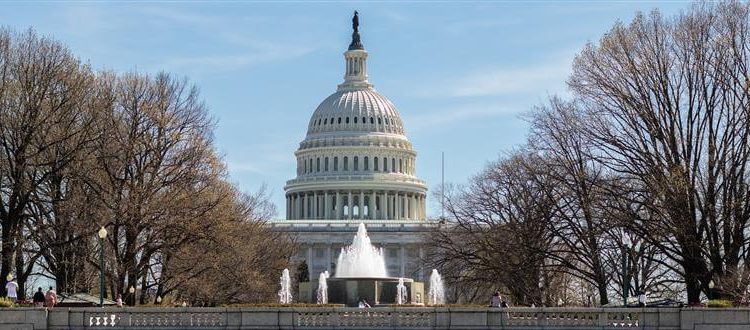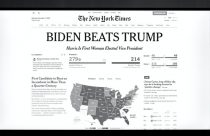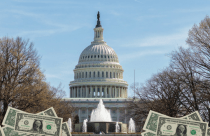Science Gets a Boost in U.S. Budget Deal

The U.S. government has been without a budget for 2017 since the beginning of this fiscal year (October 2016), however, on April 30, 2017, Congress finally reached a spending agreement for the remainder this fiscal year, which ends on September 30. In a press release dated May 1, 2017, the House Appropriations Committee announced the new Congressional budget, which includes major funding for science.
The 2017 Budget
In late March, the Trump administration suggested several budget reductions that included major cuts to research funding, such as $300 million from the National Oceanic and Atmospheric Administration (NOAA), $50 million from NASA, and $350 million from several other agencies. However, in support of scientific research and development (R&D), the new bill staves off major cuts for federal science agencies. This is great news not only for NOAA and NASA, but also for other organizations, such as the National Science Foundation (NSF), National Institutes of Health (NIH), Environmental Protection Agency (EPA), and U.S. Department of Energy’s (DOE) Office of Science.
Good News for Science
In general, R&D would increase by $155.8 billion, which includes spending on basic and applied sciences, new technologies, and new facilities split between civilian and military programs. For the second consecutive year, NIH received a budget boost in spite of Trump’s proposal to cut its budget by approximately $1 billion in 2017. The NIH increase includes $352 million for biomedical research under the 21st Century Cures Act, which was passed in December 2016, and funds to help eliminate Zika and other health threats.
The Smithsonian Institution (SI) was awarded a 2.7-percent increase for its 19 museums, nine research institutions, and the National Zoo, and the U.S. Food and Drug Administration (FDA) is slotted to receive $2.76 billion. The National Institute of Standards and Technology (NIST) would receive $954 million, including $690 million for its research activities, which is less than that in its 2016 budget but more than expected for 2017. The U.S. Department of Agriculture (USDA) would also receive an increase of 7.1 percent for its Agriculture and Food Research Initiative (AFRI), which is the leading competitive grants program in the U.S. for agricultural sciences. Awards for AFRI are provided by USDA’s National Institute of Food and Agriculture (NIFA) for research and education on everything from childhood obesity to training in agriculture and farming.
Other highlights include a $400 million increase for research on Alzheimer’s disease, a $50 million increase for research on antibiotic resistance, $120 million for the Brain Research through Advancing Innovative Neurotechnologies (BRAIN), and $300 million for the Cancer Moonshot. The Precision Medicine Initiative, created to research new methods to treat disease according to a person’s genetics, would receive an increase of $120 million, and $463 million would go toward research on new antibiotics for “superbugs” that have become resistant to traditional treatment.
Gains and Losses
Some of the major points of the final budget for R&D in 2017 are as follows:
Gains
NIH: NIH is, by far, the biggest winner. It would see a budget increase of $2 billion for 2017. Along with the increase, NIH announced that it would for, the first time; limit the amount of grant money that any one scientist can hold. This is good news for young scientists who must compete for grants with more experienced researchers.
- NASA: Although there are ongoing efforts to cut spending, particularly on climate change research, the budget provides for $19.7 billion, which includes nearly $2 billion for research in the earth sciences. The budget would also include $1.9 billion for planetary science, comprising $275 million for a mission to Jupiter’s moon Europa and $408 million for the Mars 2020 mission.
- DOE: DOE’s Office of Science is slated for $5.4 billion in spending allocations, up $42 million from 2016, and $306 million for the Advanced Research Projects Agency–Energy.
- S. Department of Defense (DOD): Although DOD’s Basic Research would be cut by about 1.4%, its Applied Research and Advanced Technology Development would see an increase of 6.0 and 13.1 percent, respectively.
- U.S. Geological Survey: More than $1 billion, up 2.2 percent from 2016, is allocated for surveys, investigations, and research.
- Centers for Disease Control (CDC): CDC will receive a portion of $800 million, up from $150 million, to battle drug addiction.
- USDA: USDA received a 7.1-percent increase for AFRI.
- SI: SI received a 2.7-percent increase.
Losses
- EPA: Although the Trump administration had asked for major cuts, there was only about a 1-percent decrease for 2017, securing most of its programs through the end of this fiscal year.
- NSF: Spending on research and education would be held to their combined 2016 totals.
- NOAA: The overall spending budget would decrease by 1 percent; however, that for research on climate change would increase by 3.5 percent.
- NIST: Although the agency received a spending allocation of $954 million, it was down from 2016.
Looking Ahead
Unfortunately, for science, these increases might not hold true for the 2018 budget if the current administration gets its way. President Trump released his 2018 “skinny budget” request in March that would cut science funding for the NIH by 18 percent and for DOE by 5.6 percent. It also proposes to eliminate ARPA-E and some of NOAA’s special programs. According to a May 1, 2017, article in the Washington Post, the bill “is likely to pass both houses of Congress and be signed into law by President Trump this week.” However, even though research has always received the support of both parties, these changes are good only until September 30, and we will have to wait for the 2018 budget numbers to see how the science industry fares for next year.








